HEARST CASTLE & PCH (Day 7 - part 4)
We first visited the Assembly Room. Completed in 1926, it is nearly 2,500 square feet. This is the reception room, where the guests would gather to socialize. It was filled with amazing tapestries and beautiful sculptures.



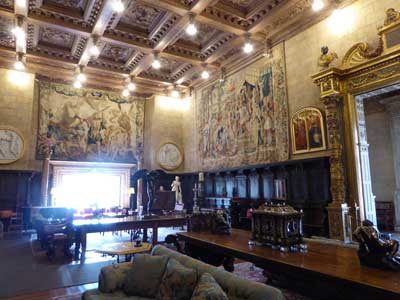
In order to fit all the large tapestries, the windows had to be build unusually low.


The fireplace, originally from a chateau in Burgundy (France), was purchased from the estate of Charles T. Barney, after his suicide. .... The white statue is called Venus Italica (Italian Venus). It was created by Antonio Canova (1757 - 1822) to replace an ancient Greek statue in Florence (Italy) that had been seized in 1802 during Napoleon Bonaparte’s invasion. Rather than just make an identical copy, Canova created this new figure. William Hearst eventually bought it from an English collector.




This painting of the Annunciation (the Christian belief where the Archangel Gabriel announces to Mary that she's pregnant with the son of God) was created by Spanish painter Bartolome Perez de la Dehesa (c. 1634 - 1698). William Hearst purchased it from a Los Angeles decorating company in 1927. .... Meanwhile in the lower right corner, a cat messes about, completely uninterested in the significant events taking place.


Four of the tapestries are designed by Giulio Romano (1499 - 1546) and celebrate the deeds of the Roman general Scipio Africanus (236 - 183 BC), who is often regarded as one of the greatest military commanders and strategists of all time. He defeated Hannibal (the guy who used elephants in battle) in the Second Punic War (210 BC). Originally consisting of a set of ten, the tapestries were once owned by King Louis XIV. They were sold off in 1797, in the wake of the French Revolution. After over a century floating about the art market, these four panels were purchased by William Hearst.


This panel is "The Reception of the Envoys from Carthage", ca. 1530 - 1555. The envoys are seen kneeling at the feet of the great general. They were sent by the defeated Hannibal to plead for mercy. Scipio is generous and grants the Carthagians self-rule.

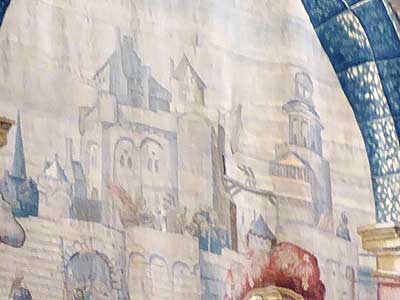
... In the background is the city of Carthage (located on the northern coast of Africa).


This tapestry is based on an oil sketch by Flemish artist Peter Paul Rubens (1577 - 1640). Sometimes called The Triumph of the Church or the Triumph of the Eucharist, it emphasizes the Catholic faith and attacks heresy and the Protestant Reformation.


We left the room via a concealed door next to the fireplace...

... and entered the Refectory, which is technically a dining hall in a monastery, but they just thought that sounded better than simply... "the dining room." The style presents an atmosphere of the Middle Ages. It was built between 1926 - 27.
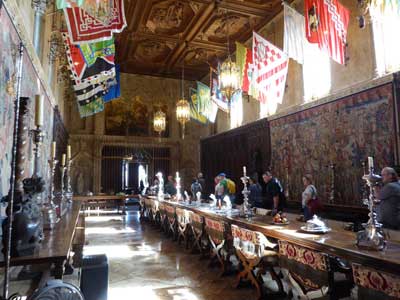

The room is 67 feet long, 27 feet wide, and 27 feet tall.


The silk flags are Palio banners from Siena (in Tuscany, Italy). A palio is an annual athletic contest that pits the local neighborhoods of a town against each other. It can involve horse racing, archery, jousting, and similar medieval sports.

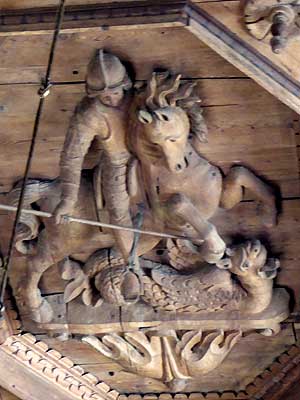
William Hearst originally wanted a "vaulted Moorish ceiling" but had to settle on Italian Renaissance. These panels with life-size carvings of saints belonged to a 16th century monastery in northern Italy and were purchased from a dealer in Rome in 1924.

The central table could seat 22 people. It came from an Italian monastery and displayed their best pieces of silverware.

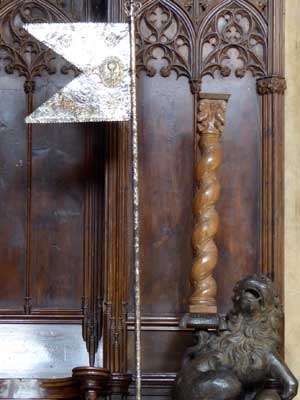
A silver mace ... and flag

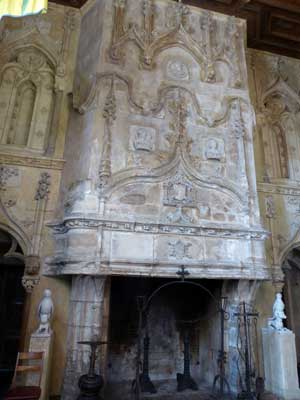
Silver candlesticks .... and the largest of the castle's 38 fireplaces


The choir stalls are from Catalonia (Spain).

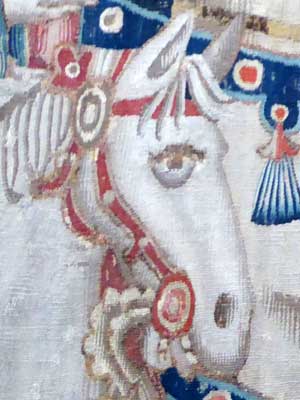
More Flemish tapestries

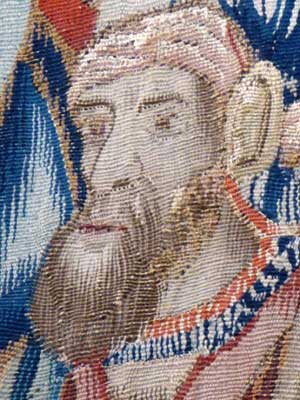
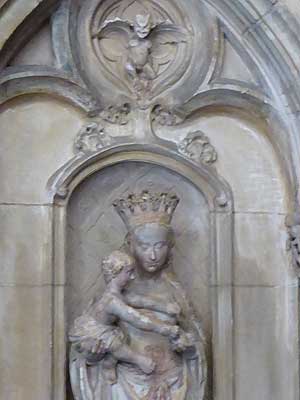

A gothic-style wall
return • continue

